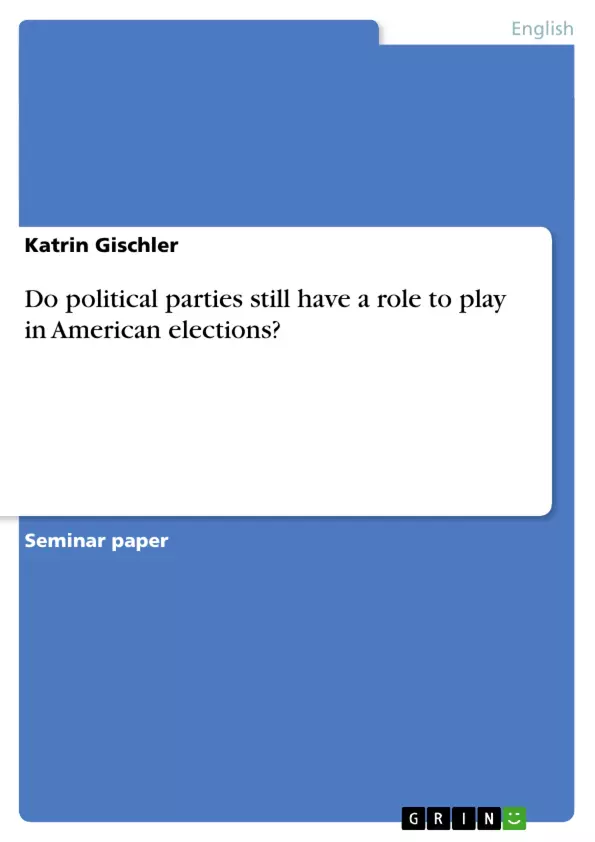“The spirit of party serves always to distract the public councils, and enfeeble the public administration. It agitates the community with illfounded jealousies and false alarms; kindles the animosity of one part against another; forments occasional riot and insurrection.” George Washington, Farewell Address to the People of the United States, September 19, 1796.1
Although George Washington’s speech clearly resembles the political view of political parties in the late 18th century, it was during his administration when the first party organizations developed.
Thus, “American political parties are among the oldest continuously established party organizations in the world.”2 Since they exist for more than two hundred years, the following essay is going to analyze if and which social and political changes have occurred that influenced the parties impact on selecting the presidential candidate. Do parties still have a role to play in American elections? I will at first briefly describe how American citizens elect their president. Secondly, in order to simplify the analysis, I refer to four distinct periods of party organization.3
Inhaltsverzeichnis (Table of Contents)
- Introduction
- The Election of the President
- Nomination
- Caucuses
- Conventions
- Primaries
- Nomination
- Conclusion - Effects of the changing nomination process
Zielsetzung und Themenschwerpunkte (Objectives and Key Themes)
This essay examines the evolving role of political parties in the selection of presidential candidates in the United States, specifically exploring how social and political changes have influenced their impact on the process. The essay analyzes the changing nature of the nomination process, contrasting the historical use of elite caucuses with the rise of national conventions, the decline of party organizations in the Progressive era, and the emergence of candidate-centered elections in the modern era.
- The evolution of political parties in the United States
- The changing nature of the presidential nomination process
- The impact of social and political changes on party organization
- The role of mass media and technology in shaping the electoral landscape
- The rise of candidate-centered elections
Zusammenfassung der Kapitel (Chapter Summaries)
The essay begins with an introduction that sets the stage for the discussion, highlighting the historical context of political parties in the United States and posing the central question of whether they still play a significant role in elections. The introduction also provides a brief overview of the different periods of party organization that will be examined in detail.
Chapter two delves into the process of electing the president, beginning with the nominating process within political parties. It explains the evolution of different nomination methods, from early caucuses to national conventions, primaries, and the contemporary candidate-centered approach. The chapter also discusses the role of the Electoral College in the U.S. presidential election.
The essay concludes with an analysis of the impact of the changing nomination process on the role of political parties in American elections. This chapter examines the challenges and opportunities faced by parties in the modern era, considering factors such as the rise of mass media, social changes, and the growing prominence of individual candidates.
Schlüsselwörter (Keywords)
This essay explores key concepts related to American political parties, presidential elections, and the nominating process. It focuses on the historical development of political parties, the changing nature of party organization, the role of social and political changes, and the impact of mass media and technology on the electoral landscape.
- Quote paper
- Katrin Gischler (Author), 2004, Do political parties still have a role to play in American elections?, Munich, GRIN Verlag, https://www.grin.com/document/47126



